How to Make Your Smile More Attractive?

Contents:
The Clinic of Aesthetic Dentistry specialises in creating beautiful smiles. This article will tell you how to care for your mouth correctly and what methods dentists use to correct dental imperfections.
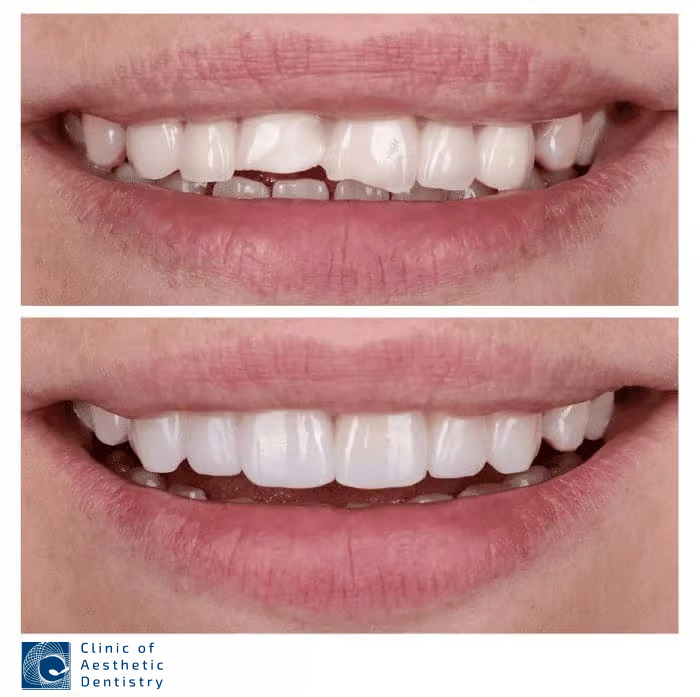
Essential Steps to Creating the Perfect Smile
Dentists do not have a one-size-fits-all recipe for creating a dream smile. The same defect can be corrected in different ways. The plan and scope of work depend on the initial state of the oral cavity, wishes, and financial possibilities.
The standard plan of action looks like this:
- Doctor consultation. At the first appointment, the dentist will ask about your needs and wishes, assess the state of the dentoalveolar system, and ask about your general health, allergic reactions, and other critical medical nuances.
- Diagnosis. Panoramic X-rays, jaw CT, T-scan, and other methods are used for examination. They allow us to accurately determine the bite anomalies, the state of the dental roots, and surrounding tissues.
- Professional hygiene. A dentist performs professional cleaning as the first step before any treatment and aesthetic restoration. Plaque removal helps the doctor see the hidden foci of enamel lesions and facilitates other procedures.
- Treatment. A beautiful smile means, first and foremost, healthy teeth. First, you must treat cavities, gingivitis, and other oral diseases. This will take anywhere from one visit to several months.
- Orthodontics. Most people have uneven teeth and will need to have their bite corrected. To do this, an orthodontist will place braces, which are worn for an average of 1-1.5 years.
- Whitening. Suppose there are indications for professional whitening, and in general, the shape and size of the teeth suit the patient. In that case, it is possible to complete the formation of an aesthetic smile.
- Aesthetic restoration. If, after orthodontics, there are imperfections left in the tooth row, whitening will not be enough. Creating a beautiful smile involves restoration with composite materials, composite or ceramic inlays, crowns, or veneers.
Aesthetic Dental Restoration: How to Get a Perfect Smile
Modern dentistry uses ceramic restorations with crowns, which completely cover the patient’s tooth or veneers – onlays on the tooth’s front surface. Dental specialists use pressed solid ceramic or glass ceramic for their manufacturing. The materials are hypoallergenic and safe, and their physical and chemical characteristics are similar to natural enamel.
Ceramic restorations last 10–20 years if reliable materials and proper care are chosen. They are replaced with similar designs at the end of their service life.
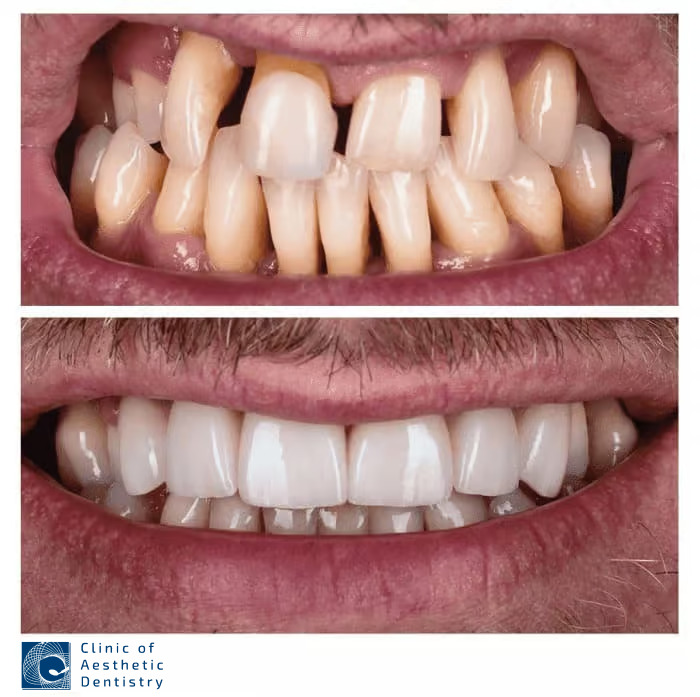
In the case of minor defects and the patient’s desire to save money, a dental specialist will use direct composite restoration. A dentist carries it out in one visit. Photopolymers are applied to the tooth layer by layer to mask chips, cracks, and other minor imperfections.
Healthy Teeth and Gums Are the Key to a Perfect Smile
Many patients visit the dentist requesting aesthetic restoration in the smile area, ignoring oral health conditions. The desire to make teeth white and straight as quickly as possible to get rid of complexes is easy to understand. However, from a medical point of view, this approach is not justified.
To place veneers or crowns, your teeth and gums must be healthy. Otherwise, there is a risk of complications or incorrect selection of prostheses.
Before restoration, dentists always carry out a complete oral cavity debridement. This is a set of procedures to identify and eliminate inflammatory and carious foci. After sanitation, the teeth do not hurt, the gums look natural and do not swell.
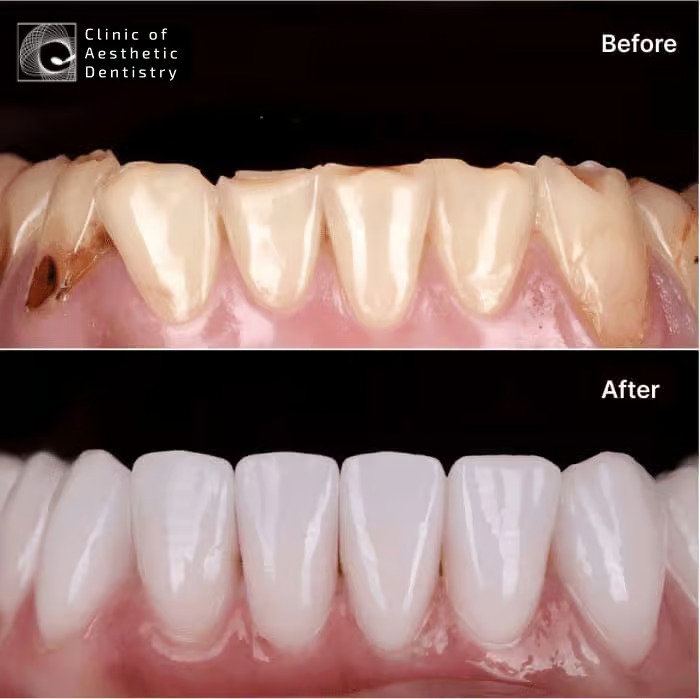
How to Get Rid of Bite Problems?
How to tell you have the correct (orthognathic) bite:
- the symmetrical and tight interlocking of the tooth rows;
- overlap of the lower incisors with the upper incisors by ⅓ of their height;
- no wide interdental spaces and gaps;
- no problems with chewing and diction.
If bite irregularities are established, the dental professional will recommend braces. Orthodontic design moves the teeth into the correct position and aligns them, ensuring the health and aesthetics of the smile. Bracket systems are used not only in children but also in adults. To make the products less noticeable, we recommended choosing ceramic options.
Sometimes, it is possible to proceed to aesthetic restoration without wearing braces. Prosthetics for a patient with bite pathology is a task that requires digital planning and careful selection of prostheses. High-quality work allows you to create an aesthetic smile in just a few weeks. Indications and contraindications for this restoration method are determined individually at a consultation.
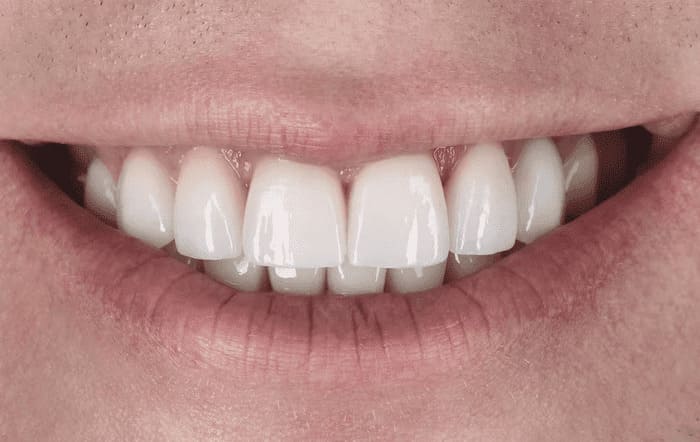
How to Choose the Perfect Tooth Shade?
The shade you choose depends on the original enamel colour and the restoration size. If a patient needs veneers or crowns on all teeth, any colour can be selected – from dazzling white, like Hollywood stars, to a natural creamy shade. When choosing, the shade of the whites of the eyes, skin, and hair colour are taken into account so that the appearance looks harmonious.
When restoring the frontal area of the smile or individual dental units, their shade matches the colour of the entire tooth row. If the patient wants to whiten the teeth beforehand, this procedure is carried out first, and then the shade is selected to match the renewed enamel shade.
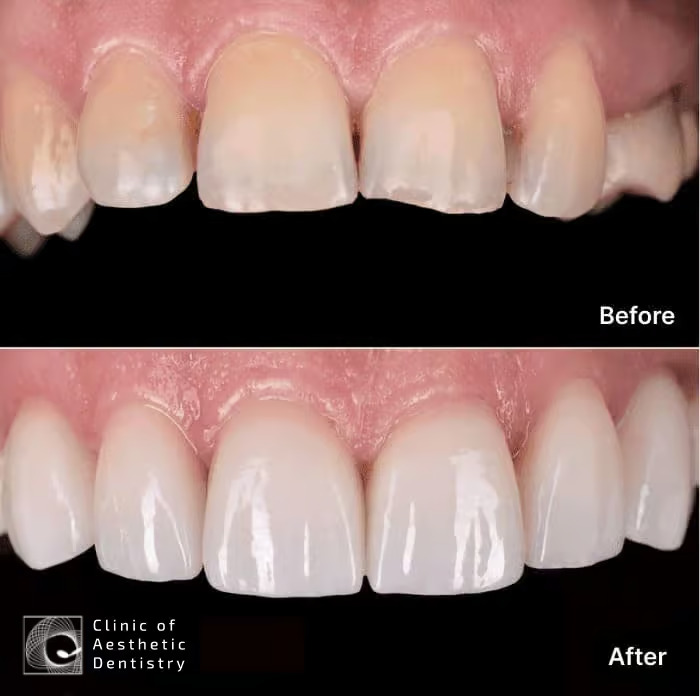
Dentists use shade guides to determine your teeth’ original shade objectively. A computer simulation of your future smile is then performed so that you can assess the colour, shape, and size of each tooth. The virtual fitting allows you to see the final result and the general appearance of your appearance so that the effect is exactly as expected.
How Can You Keep Your Perfect Smile for Years to Come?
Ceramics and other dental restoration materials are highly durable but must be treated carefully. To minimise the risk of cracks, chips, and other troubles, doctors recommend following these rules:
- get rid of the habit of chewing on a pen or pencil, opening packages with your teeth, and chewing candy and nuts;
- avoid viscous and sticky sweets, which stick to the teeth and are difficult to clean;
- cut hard fruit and vegetables into bite-sized pieces before eating;
- do not eat cold food immediately after hot food and vice versa;
- if possible, stop smoking or reduce the number of cigarettes smoked;
- use a special mouth guard to protect your teeth from injury during contact sports.
It is also necessary to monitor your health in general, as pathologies of internal organs affect the condition of the dentomandibular system, causing inflammatory processes and enamel destruction. Equally important is a balanced diet, which provides the body with vitamins and minerals.
Proper Oral Hygiene
Plaque build-up and bacterial growth in the oral cavity are the leading causes of dental diseases. To avoid this, you should take good care of your oral hygiene:
- brush your teeth twice a day for at least 2 minutes;
- clean the outside, chewing, and inside of the teeth thoroughly;
- brush teeth with a sweeping motion from top to bottom or bottom to top;
- use dentist-recommended toothpastes and soft brushes that do not damage the surface of ceramic dentures;
- avoid abrasive whitening pastes that can scratch ceramic onlays and composite restorations;
- use mouthwash and/or irrigator to remove plaque and food debris.
Home oral hygiene is not a substitute for professional dental cleaning. During the procedure, the dentist removes plaque from hard-to-reach areas of the mouth and cleans between the teeth and the inner surface of the teeth, which is challenging to treat with a regular toothbrush.
Dentists recommend professional hygiene twice a year. It is convenient to combine visits to the doctor with routine check-ups. Sticking to these recommendations, you will keep your smile for many years and be happy with your reflection in the mirror every day.

